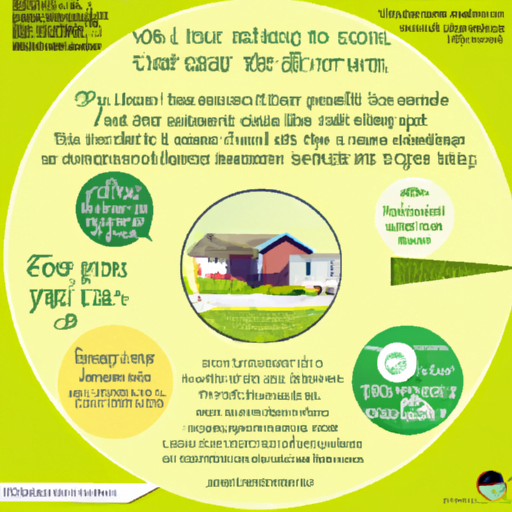I’ve always been intrigued by the idea of living self-sufficiently, away from the hustle and bustle of city life. Recently, I stumbled upon the terms “off-grid” and “homesteading” and realized that there must be some distinction between the two. Now, you’re probably wondering, what exactly sets these two lifestyles apart? Well, in a nutshell, off-grid living refers to being disconnected from the power grid and relying solely on renewable energy sources, while homesteading encompasses a broader concept of living off the land and becoming self-reliant. Let’s delve deeper into the nuances of these two unique ways of life and explore the differences that make each one special.

Location and Lifestyle
Off-Grid Living
Off-grid living refers to the lifestyle of residing in a self-sufficient manner, without reliance on public utilities such as electricity, water, or sewage systems. It typically involves living in remote or rural areas, away from the bustling cities and suburbs. Off-grid living offers individuals the freedom to disconnect from the grid and embrace a simpler, more sustainable way of life.
This lifestyle choice often involves finding land that is suitable for off-grid living, away from the constraints of urban development. It may mean living in a small cabin, tiny house, or even a yurt. The location is usually chosen for its natural beauty and tranquility, providing a peaceful escape from the chaos of modern society.
Homesteading
Homesteading, on the other hand, refers to the practice of living on and cultivating a piece of land, typically on a small-scale farm or homestead. It involves growing one’s food, raising livestock, and becoming self-reliant in terms of food production. While homesteaders may also choose to live off-grid, the focus is more on the self-sufficiency and sustainability of their food sources rather than the disconnection from public utilities.
Unlike off-grid living, homesteading can be practiced in a variety of locations, including rural areas, suburban neighborhoods, and even within city limits. It is more centered around creating a self-sufficient lifestyle, regardless of the proximity to urban amenities.
Ownership
Off-Grid Living
In off-grid living, the emphasis is often on ownership of the land and the infrastructure required for self-sufficiency. Many off-grid enthusiasts choose to purchase their own piece of land, enabling them to establish a permanent home and make long-term investments in renewable energy systems, water sources, and food production infrastructure.
Homesteading
Homesteading also involves land ownership, but it may not necessarily require a large plot of land. Homesteaders can make use of smaller spaces, such as suburban backyards or rooftop gardens, to cultivate their own food and raise livestock. The focus is on ownership and stewardship of the land, regardless of the size.
Energy Sources
Off-Grid Living
When it comes to energy sources, off-grid living typically relies on renewable energy systems such as solar panels, wind turbines, or hydroelectric power. These individuals take advantage of the abundant natural resources surrounding their properties to generate power for their homes and other energy needs. By harnessing renewable energy sources, off-grid dwellers reduce their environmental impact and gain energy independence.
Homesteading
Homesteaders, too, often embrace renewable energy sources to reduce their reliance on the traditional power grid. Solar panels or wind turbines can be used to power various aspects of a homestead, such as heating, cooling, and electrical needs. However, unlike off-grid living, homesteaders may still be connected to the public power grid as a backup or for supplemental power during peak demands.
Food Production
Off-Grid Living
In off-grid living, food production is typically focused on self-sufficiency and sustainability. Individuals in remote areas often have limited access to grocery stores, making it necessary to grow their food to ensure a constant supply. Off-grid dwellers commonly engage in practices such as permaculture, aquaponics, and organic gardening to cultivate a wide range of fruits, vegetables, and herbs.
Homesteading
Homesteaders take food production to the next level by cultivating an even more extensive variety of crops and raising livestock. A homestead often includes livestock such as chickens, goats, pigs, or even cows for dairy purposes. This enables homesteaders to produce their meat, dairy, eggs, and other animal products, ensuring a well-rounded and self-sufficient food supply.
Water Sources
Off-Grid Living
Water is a crucial resource for off-grid living, and individuals often rely on natural sources such as streams, wells, or rainwater harvesting systems. Purification methods, such as filtration or UV sterilization, are used to ensure the water is safe for consumption. Rainwater collection systems, coupled with storage solutions, can provide sustainable water sources even in arid environments.
Homesteading
Homesteaders may utilize similar water sources as off-grid dwellers but may also explore additional options. In addition to natural sources, homesteaders may invest in systems such as wells or water catchment tanks for long-term water security. Greater emphasis is placed on water conservation and efficiency, as the availability of water is closely tied to the success of their food production endeavors.
Self-Sufficiency
Off-Grid Living
Off-grid living, by its very nature, encourages self-sufficiency in all aspects of life. Individuals strive to meet their own needs without relying on external resources or support systems. This includes producing food, generating energy, managing waste, and even healthcare. Off-grid dwellers often seek to develop a wide range of skills and knowledge to become more self-reliant and resilient in the face of any potential challenges.
Homesteading
Homesteading similarly promotes self-sufficiency, with a specific focus on food production. Homesteaders aim to provide for themselves and their families by growing their food, raising animals, and preserving the fruits of their labor. In addition to food production, many homesteaders develop skills in woodworking, food preservation, animal husbandry, and other trades that contribute to their overall self-reliance.
Social Connections
Off-Grid Living
Living off-grid often means embracing solitude and limited social interactions. Remote locations and the commitment to self-sufficiency can result in a more isolated lifestyle. Off-grid individuals may have limited contact with neighbors or prefer the company of nature over large social groups. However, this doesn’t necessarily mean they are completely cut off from society. Many off-grid communities exist, where like-minded individuals come together to share resources, knowledge, and experiences.
Homesteading
Homesteaders, while also valuing self-sufficiency, tend to have more opportunities for social connections. Homesteading can be a way to bring families and communities together, as it often involves shared responsibilities and collaborative projects. Many homesteaders participate in farmers’ markets, community-supported agriculture programs, or local agricultural initiatives, providing opportunities for social interactions with others who value sustainable living and self-sufficiency.
Financial Considerations
Off-Grid Living
Off-grid living can have various financial considerations. While the initial setup costs for renewable energy systems and infrastructure can be significant, the long-term savings on utilities can outweigh these expenses. Off-grid dwellers have the potential to experience lower monthly energy bills and reduced reliance on commercial food sources, leading to increased financial independence. However, the initial investment and ongoing maintenance costs must be taken into account when considering the financial aspects of off-grid living.
Homesteading
Homesteading also involves financial considerations, but they may differ from those of off-grid living. While homesteaders may not require the same level of investment in energy systems, the costs associated with purchasing land, acquiring livestock, and maintaining the infrastructure for food production can add up. However, the focus of homesteading is often on self-sufficiency and the production of high-quality, organic food, which can lead to savings in grocery expenses over time.
Maintenance and Skills
Off-Grid Living
Off-grid living often requires a diverse skill set and a willingness to take on maintenance tasks. Individuals must have a basic understanding of electrical systems, water management, and building maintenance. Additionally, off-grid dwellers may need to be proficient in renewable energy systems, gardening, and basic first aid. Regular maintenance and troubleshooting are essential for the smooth operation of off-grid infrastructure and ensuring self-sufficiency.
Homesteading
Homesteading also demands a range of skills for successful management. In addition to basic maintenance tasks, homesteaders must be knowledgeable in various agricultural practices, animal care, food preservation techniques, and land management. Skills such as carpentry, plumbing, and gardening become valuable assets in maintaining and expanding the homestead. Homesteading requires continuous learning and adaptation to the challenges that come with a self-sufficient lifestyle.
Community Support
Off-Grid Living
While off-grid living can be synonymous with solitude and independence, it doesn’t mean individuals have to go it alone. Off-grid communities or intentional living communities provide opportunities for like-minded individuals to support each other and share resources. These communities can foster a sense of camaraderie and allow individuals to learn from each other’s experiences, making the off-grid lifestyle more enjoyable and sustainable.
Homesteading
Homesteading, too, benefits from community support. Local networks of homesteaders and farmers often collaborate to exchange knowledge, resources, and surplus produce. Agricultural cooperatives and community-supported agriculture programs allow homesteaders to connect with consumers who value locally grown, sustainable food. This support system creates a sense of belonging and strengthens the self-sufficient lifestyle.
In conclusion, while off-grid living and homesteading share some similarities in their pursuit of self-sufficiency and sustainable lifestyles, they differ in terms of focus and scope. Off-grid living prioritizes disconnection from public utilities and a reliance on renewable energy sources, while homesteading emphasizes self-sufficient food production and the stewardship of land. Despite their differences, both lifestyles offer individuals the opportunity to live intentionally, embrace simplicity, and connect with nature. Whether one chooses to go off-grid or embark on a homesteading journey, each path is a unique and rewarding way to break free from the constraints of modern society and create a more sustainable future.




